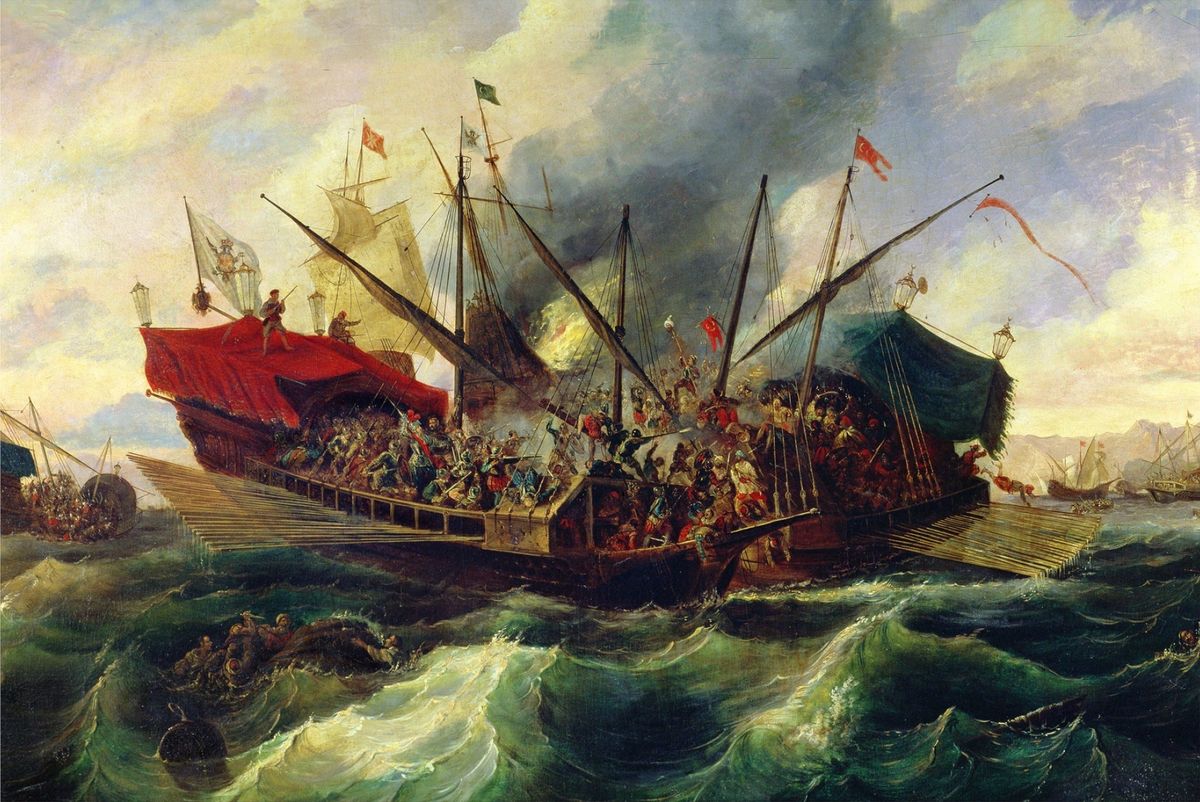
The Ottoman–Venetian Wars spanned over three centuries, shaping the Mediterranean's political and cultural landscape. These conflicts, involving the powerful Ottoman Empire and the maritime Republic of Venice, were driven by control over trade routes and territorial expansion. Did you know that the first war began in 1463 and the last one ended in 1718? These wars saw epic naval battles, sieges, and shifting alliances. Ever wondered how these wars influenced the Renaissance or the spread of gunpowder technology? Let's dive into 30 intriguing facts about these historic clashes, revealing their impact on both empires and the world.
Key Takeaways:
- The Ottoman–Venetian Wars were long conflicts between two powerful empires, impacting trade, culture, and diplomacy. They shaped the Mediterranean region and influenced art, architecture, and naval warfare.
- The wars led to the decline of Venetian power and the Ottoman Empire's control over trade routes. They also sparked cultural and technological exchange, leaving a lasting impact on the history of both empires.
Origins of the Ottoman–Venetian Wars
The Ottoman–Venetian Wars were a series of conflicts between the Ottoman Empire and the Republic of Venice. These wars spanned several centuries and had significant impacts on both empires.
- The first war began in 1463 and lasted until 1479.
- Venice sought to protect its trade routes and territories in the Eastern Mediterranean.
- The Ottomans aimed to expand their empire and control key trade routes.
- The wars were marked by naval battles, sieges, and land campaigns.
- The conflict was part of the larger struggle between Christian Europe and the Muslim Ottoman Empire.
Key Battles and Sieges
Several important battles and sieges defined the Ottoman–Venetian Wars. These engagements showcased the military strategies and technologies of the time.
- The Siege of Negroponte in 1470 was a significant Ottoman victory.
- The Battle of Zonchio in 1499 was the first naval battle where cannons were used on ships.
- The Siege of Famagusta in 1570-1571 was a brutal conflict that ended with the Ottomans capturing Cyprus.
- The Battle of Lepanto in 1571 was a major naval battle where the Holy League defeated the Ottoman fleet.
- The Siege of Candia (1648-1669) was one of the longest sieges in history, lasting over 21 years.
Impact on Trade and Economy
The wars had profound effects on trade and the economies of both the Ottoman Empire and Venice. Control of key ports and trade routes was a primary objective.
- Venice's trade dominance in the Mediterranean was challenged by the Ottomans.
- The capture of key ports like Negroponte and Cyprus disrupted Venetian trade networks.
- The wars led to increased military spending, straining both empires' finances.
- Venetian merchants had to find alternative routes and partners for trade.
- The Ottomans gained control of important trade routes, boosting their economy.
Cultural and Technological Exchange
Despite the conflict, there was significant cultural and technological exchange between the two empires. This exchange influenced various aspects of life in both regions.
- Venetian artisans and architects were employed in the Ottoman Empire, contributing to its architectural development.
- The Ottomans adopted Venetian shipbuilding techniques, enhancing their naval capabilities.
- Venetian glassmaking techniques influenced Ottoman glass production.
- The wars facilitated the exchange of ideas and technologies between East and West.
- Venetian and Ottoman art and literature were influenced by each other's styles and themes.
Diplomatic Efforts and Treaties
Throughout the wars, there were numerous attempts at diplomacy and peace treaties. These efforts aimed to end the conflicts and establish stable relations.
- The Treaty of Constantinople in 1479 ended the first war, with Venice ceding several territories to the Ottomans.
- The Treaty of Zadar in 1358 marked an earlier peace agreement between Venice and the Ottomans.
- The Treaty of Passarowitz in 1718 ended the last of the Ottoman–Venetian Wars.
- Diplomatic marriages were sometimes used to strengthen alliances and secure peace.
- Envoys and ambassadors played crucial roles in negotiating treaties and maintaining communication.
Legacy of the Ottoman–Venetian Wars
The legacy of the Ottoman–Venetian Wars is still evident today. The conflicts shaped the political, economic, and cultural landscapes of the Mediterranean region.
- The wars contributed to the decline of Venetian power and influence in the Mediterranean.
- The Ottoman Empire solidified its control over key territories and trade routes.
- The conflicts influenced the development of naval warfare and military technology.
- The cultural exchange during the wars left a lasting impact on art, architecture, and literature.
- The wars are remembered as a significant chapter in the history of both the Ottoman Empire and Venice.
The Ottoman–Venetian Wars' Legacy
The Ottoman–Venetian Wars left a lasting impact on both empires. These conflicts reshaped Mediterranean trade routes and influenced cultural exchanges between East and West. The wars also showcased the strategic importance of naval power and fortifications. Venice, despite losing territories, managed to maintain its status as a major maritime power for centuries. The Ottoman Empire, on the other hand, expanded its influence, solidifying its control over key regions.
These wars also highlighted the resilience and adaptability of both empires. They adapted their strategies and technologies to meet the challenges of prolonged conflict. The legacy of these wars can still be seen in the architecture, art, and cultural practices of the regions involved. Understanding this historical period provides valuable insights into the complexities of geopolitical struggles and the enduring impact of military conflicts on civilizations.
Frequently Asked Questions
Was this page helpful?
Our commitment to delivering trustworthy and engaging content is at the heart of what we do. Each fact on our site is contributed by real users like you, bringing a wealth of diverse insights and information. To ensure the highest standards of accuracy and reliability, our dedicated editors meticulously review each submission. This process guarantees that the facts we share are not only fascinating but also credible. Trust in our commitment to quality and authenticity as you explore and learn with us.
